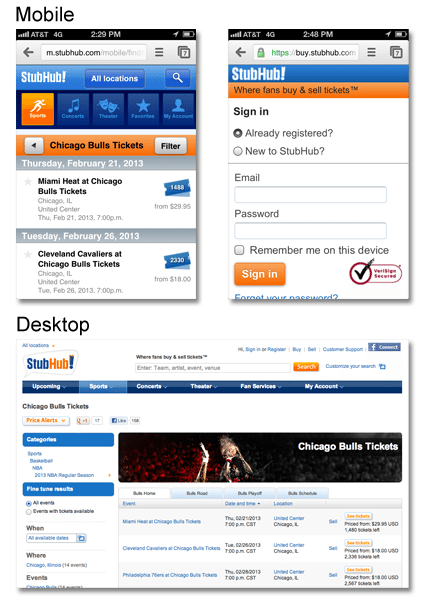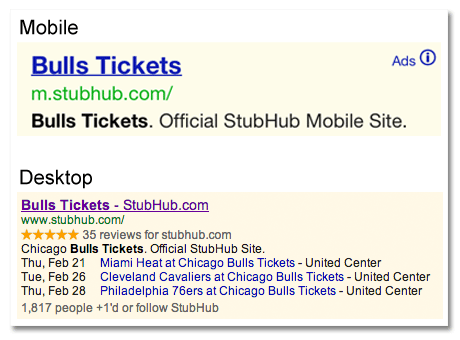With nearly a quarter of last year’s paid search clicks coming from mobile devices, it’s about time Google Adwords caught up. Their brand new enhanced campaigns are designed to simplify campaign management across different devices, so instead of building separate campaigns for separate devices, PPC managers will now set bids and ad copy based on the device type all within a single campaign.
Now that mobile PPC campaigns are more accessible to brand managers, it’s a perfect time to look at what distinguishes a good desktop paid search experience from a good mobile paid search experience. Below, you’ll see the difference between StubHub’s mobile and desktop campaigns, as found through a search for “bulls tickets.”
Mobile vs. Desktop Search Ads
Nothing gets under a mobile user’s skin like extensive pinching and zooming and accidental clicks. So if you have a nice mobile site waiting on the other side of the add, let searchers know that they’re in for a good experience. In the example above, StubHub indicates this mobile-friendliness in two places: the URL (m.stubhub.com) and the ad copy (Official StubHub Mobile Site).
The mobile ad copy gives minimal information. What do you want? Bull tickets. Who are we? StubHub Mobile. Meanwhile, the desktop ad is much more robust, pulling in a five star site review as well as a list of upcoming Bulls games.
Mobile vs. Desktop Site Experience
 The desktop version of the destination page works — but on mobile, that would be a pinch and zoom nightmare. StubHub cuts the second column, increases button size and optimizes forms for a headache-free mobile experience, just like the ad promised.
The desktop version of the destination page works — but on mobile, that would be a pinch and zoom nightmare. StubHub cuts the second column, increases button size and optimizes forms for a headache-free mobile experience, just like the ad promised.
